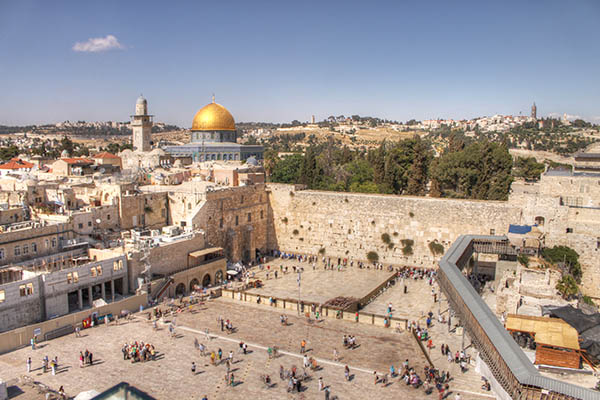
Today, we’re gonna wrap up our study of the history of Jerusalem with a quick overview.
So here’s what we learned so far.
FIRST, we learned the oldest known name for this city is Yerushalayim.
Surprisingly, that name isn’t Hebrew—it’s Akkadian!
Archaeologists found clay tablets in northern Syria during the late 1960s and early 1970s that used the name Yerushalayim.
These tablets were written in Akkadian about 4,500 years ago, which is about 500 years before Abraham lived.
The name Yerushalayim likely means something like “the foundation of the god Shalem.”
A shorter name for the city was Shalem, which was one of the names used during Abraham’s time.
This is the name of the place where Abraham met the mysterious king and priest, Melchizedek.
SECOND, later on, a group called the Jebusites either took over or built up Yerushalayim.
They added walls around part of the city, and both Jebus and Yerushalayim became common names for the area.
The Jebusites called the walled-off section Zion.
THIRD, in 2 Samuel chapter 5, we read about David and his private army conquering this walled section.
Afterward, David renamed it The City of David.
Since David didn’t use the national tribal army when he took Zion, he felt it was okay to name it after himself—The City of David.
Here’s a clear way to understand the situation:
Yerushalayim was the name for the larger area, while The City of David was just the name for the walled part of the city.
This walled section was located on the southern slope of Mt. Moriah, downhill from the rest of the area.
So, The City of David and Yerushalayim are NOT the same thing.
Keep that in mind!
That’s key to remember as we move forward…
And we’re gonna revisit this topic when we get into the era of King Solomon.
He was the first king to build the first temple for the Lord on top of Mount Moriah, which was OUTSIDE the City of David.
So here’s what I’m getting for today’s takeaway.
2 Samuel chapter 5 is jam-packed with important details that are so easy to miss…
But we shouldn’t because they are so crucial to understanding the Biblical narrative.
Ya feeling me here?
So that’s your lesson for today.
We usually say, “The devil is in the details.”
Well, let me flip that expression on its head by saying “God is in the details.”
If we wanna really understand the Lord and His Word in a meaningful way that can be applied to our lives…
Not only is it important to study all of the Bible (not just a few books in the New Testament)…
But it’s vital we NOT skim over the details just because they might seem irrelevant or boring or something…
Ya feel me?



Leave a Reply